Hello everyone! I am settled here in Greenland and have had the chance to catch up with some of the science team here on the ground. While the remainder of the team is flying out of Fairbanks to complete several priority science flights, I had some time get to know Thule and begin to experience life above the Arctic Circle--an adventure in its own right. Let's take a look at my first day in Thule.
Arctic First Look
As you may have read in last night's airport post, I spent several hours in Terminal E at BWI with a small group of other passengers, most heading to base on military deployment. We boarded our rotator, a B757 combination passenger and cargo plane just around 1:30 a.m., but didn't get in the air until closer to 3 a.m. We learned from our pilot that when flying to Thule, a number of 'back-up' landing air strips must be in place in case an unexpected storm or other incident arises. One of the usual back-ups for our flight was experiencing poor weather and could not be listed as a reliable port, so the crew was working with their operations team in Thule to create a new plan before we could take-off.
Once we were in the air it was smooth sailing. We left Baltimore under a bright full moon and, for a six hour flight, this proved to be one of the most comfortable flying experiences I have had. As a passenger, the plane did not feel very different from a commercial airliner except for its size. Even so, with the small number of passengers on board, it worked out that each of us had our own row of three seats and after an early morning 'dinner' many of us stretched out for a nap across our respective rows. Soon the sun was rising over the horizon and after a good, long nap intertwined with bouts of Star Wars viewing on our handheld devices, the bright Arctic Sun brightened my window. We were close.
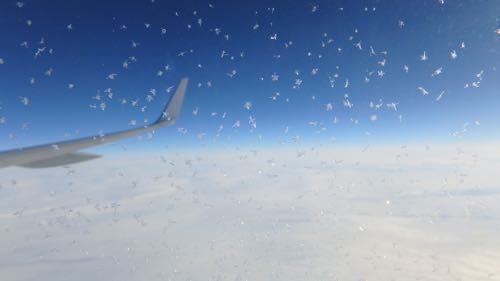
The view of the landscape when we were crossing the Arctic Ocean and working our way toward Thule was enough to take your breath away. Broken sea-ice and windblown snowpack sparkled beneath the clouds and bright blue icebergs contrasted the white expanse. I can't imagine what the view must be like when we're flying just 1500 feet above it all on the NOAA P3, but I have a feeling that we have many more 'take your breath away' moments in store.
Welcomed by security forces from the U.S. Air Force, we arrived at base, stepped off the plane into a nice crisp 10 degrees Farenheit and proceeded to submit passports and documentation, receive briefings on the rules of the Thule air base, collect our luggage and head 'home.'
Welcome to the Chicken Farm Building 331
Home sweet home for the next few days is in an area on base called the Flat Tops. The IceBridge Team is staying in Building 331, also known as the "Chicken Farm" (I'll let you know if I find out the backstory). There are only four of us currently staying in 331 while the rest of the team is finishing up science flights based out of Fairbanks. They will meet us again in a few days when I will jump on board for my first science flight of the expedition! In the meantime I will be sharing with you some information about life in Thule as well as some of the science objectives behind the flights this year.
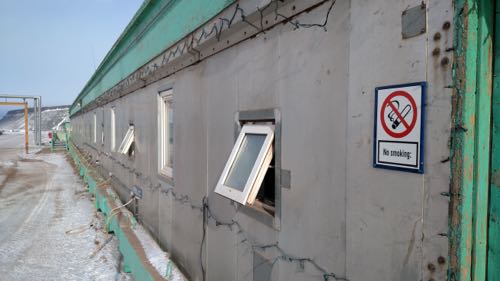

Collaboration
One of the most important elements of this entire Operation is the collaboration between scientists of all different fields in an effort to understand our changing poles. I was greeted in Thule by Kyle Krabill, ATM Instrument Team Engineer; Dr. Linette Boisvert, Sea Ice Scientist; and Alek Petty, Sea Ice Scientist. With everyone hard at work in the common area of our living quarters, it was not long before ideas were flowing between Kyle, an expert on ATM, and Alek and Linette who are using ATM data in combination with data from other airborne instruments and satellite information to understand things like moisture flux in sea ice and drag in sea ice features. It was exciting to get to know some of the major research objectives on the sea ice side and to watch the organic flow of ideas between these experts of very different but extremely connected fields of science. Stay tuned for more on this, but if you have any questions, ask them in the "Ask the Team" comment boxes!
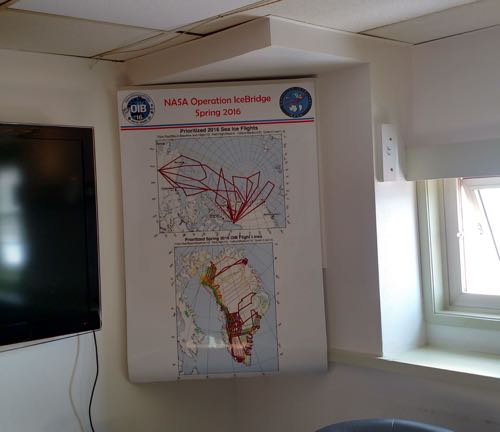
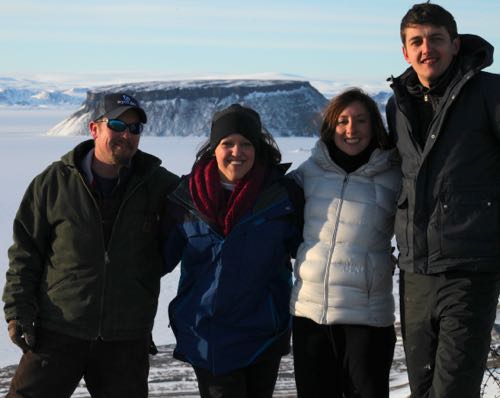
Thule Tripping: A Tour in Photos
As I mentioned, the team is flying several science flights out of Fairbanks, while I get acclimated to Greenland and I learned quickly that it is a place like no other. The number of times I was left awestruck and speechless by my surroundings is more than I can count and this is just the beginning. I had the chance to explore a bit of the base with the OIB crew and I'd like to share with you a Thule Tour in Photos.
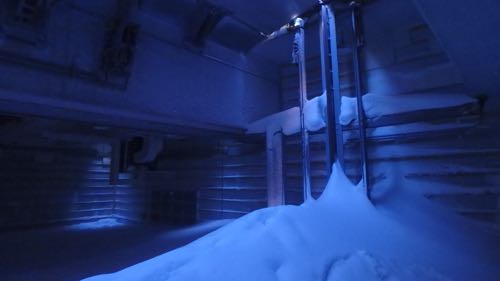
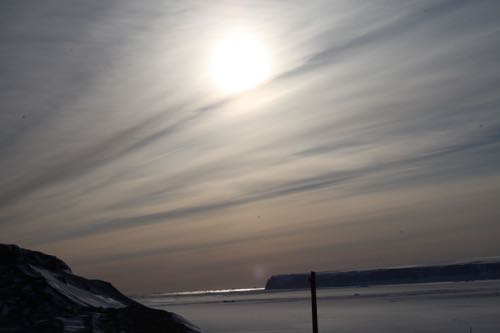
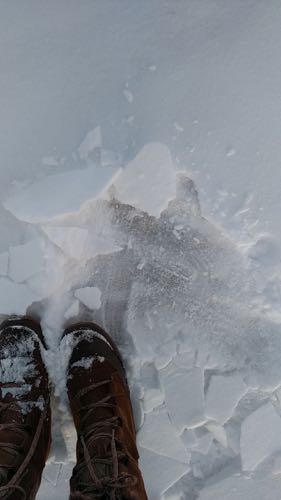
Midnight Sun(set)
When you are reading this it will be Earth Day, a day after the final sunset in Thule Greenland before months of perpetual daylight. The photos below were taken between 12:30 a.m. and 2 a.m. on Baffin Bay where the team and I went out to catch a glimpse of the last sunset of the season on a frozen mass of sea ice. The hues of the midnight sunset combined with the glassy sea ice and glistening snow was a spectacular finale to my first day in the Arctic. The beauty here is unlike anything you've ever experienced and the science invaluable. Welcome to the Arctic.
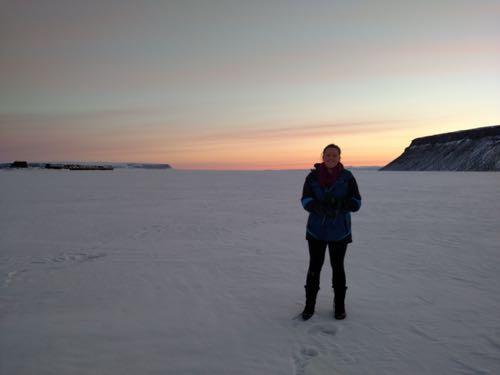
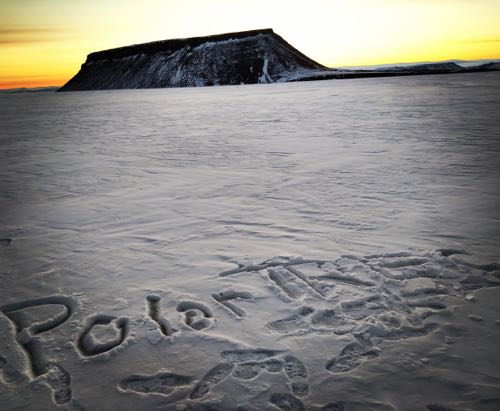
Question of the Day
Over what sea is the Operation IceBridge team focused on when they run science flights out of Fairbanks, Alaska?
Wednesday's Answer: Mt. Dundas (Good job, Cage!)


Comments